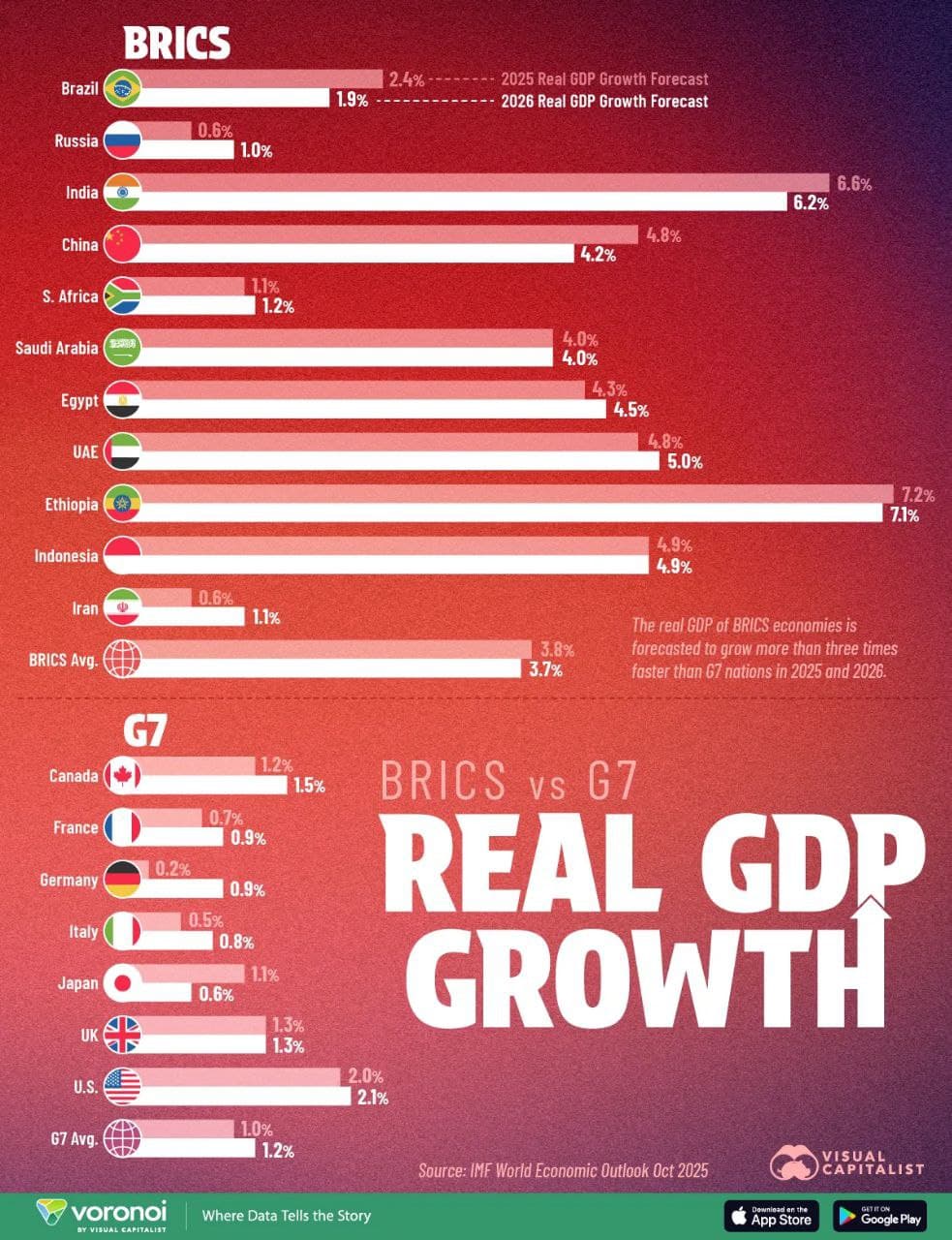BRICS Countries Projected to Outpace G7 in GDP Growth by 2026
According to a recent report by ZeroHedge, BRICS nations are anticipated to surpass G7 countries in terms of GDP growth by the year 2026. This projection highlights a significant shift in the global economic landscape, with BRICS countries increasingly asserting their influence in a multipolar world. The report, authored by Marcus Johnson and published on November 4, 2025, draws on data from the International Monetary Fund’s (IMF) World Economic Outlook October Update.
Key Details
The BRICS coalition, which includes Brazil, Russia, India, China, and South Africa, currently represents approximately half of the global population. This demographic advantage, coupled with robust economic growth, positions these nations as formidable players on the world stage. Unlike many Western nations, several BRICS countries are experiencing rapid GDP growth fueled by substantial investments, increased trade, and favorable demographic changes.
As the global economy becomes more multipolar, the influence of BRICS countries is expected to expand further. The report includes a graphic created by Visual Capitalist"s Dorothy Neufeld, which visually compares the real GDP growth projections of BRICS nations against those of the G7 countries, which consist of Canada, France, Germany, Italy, Japan, the United Kingdom, and the United States.
The IMF"s World Economic Outlook provides critical insights into these projections, underscoring the economic trends that are driving growth in BRICS nations. The report indicates that while G7 countries have historically dominated global economic discussions, the emerging economies within BRICS are poised to challenge this status quo.
Background
The BRICS group was formed in 2009 as a response to the changing dynamics of the global economy, aiming to enhance cooperation among emerging economies. Over the years, the coalition has gained prominence, particularly as it represents a significant portion of the world"s population and economic activity. The growing economic heft of BRICS countries is attributed to various factors, including increased foreign direct investment, trade partnerships, and demographic shifts that favor younger populations.
In contrast, G7 countries, while still economically powerful, are facing challenges such as aging populations, slower growth rates, and increased competition from emerging markets. The IMF"s projections reflect these trends, suggesting a potential realignment of global economic power in the coming years.
What"s Next
The implications of this projected economic shift are profound. As BRICS countries continue to grow at a faster pace than their G7 counterparts, the global economic landscape may witness a reconfiguration of trade relationships, investment flows, and geopolitical alliances. The increasing influence of BRICS could lead to a more balanced global economy, where emerging markets play a more significant role in shaping international policies and economic strategies.
In light of these developments, stakeholders in both BRICS and G7 countries will need to adapt to the changing dynamics of global trade and investment. As previously reported, recent developments in various political arenas, such as the Virginia attorney general race, reflect the broader shifts in governance and policy that may also impact economic strategies moving forward.
For further insights into related coverage, readers can explore the article on recent developments in political races and how these may intersect with economic trends.







![[Video] Democrat Mikie Sherrill elected New Jersey's next governor](/_next/image?url=%2Fapi%2Fimage%2Fthumbnails%2Fthumbnail-1762333849296-ya4ohn-thumbnail.jpg&w=3840&q=75)
